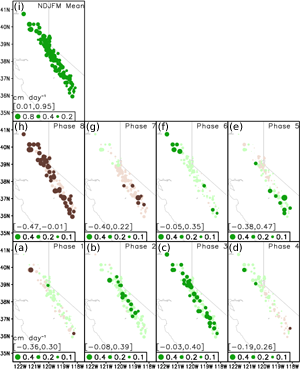
|
|
Click image for more detail | |
|
Contact: Marty Ralph
|
|
HMT Publication Notice
This observational study explores the impacts of the Madden-Julian Oscillation (MJO) on the Sierra Nevada snowpack, with a focus on related atmospheric river (AR) activities. AR activities are found to be significantly enhanced during MJO phase 6 (based on the Wheeler-Hendon diagram). The total seasonal snow accumulation, on the other hand, is most significantly modified by MJO phase 3 with increased snow accumulation, and by phase 8 with decreased snow accumulation. The results may have implications on the medium-range predictability of the Sierra Nevada snowpack and California water resources given that useful forecasts of the MJO can be made empirically at 2–3 weeks lead. This work has been conducted under partnership with the CalWater experiment. Primary support is provided by NASA, NSF, and ARRA funds.
 Read the Abstract
Read the Abstract